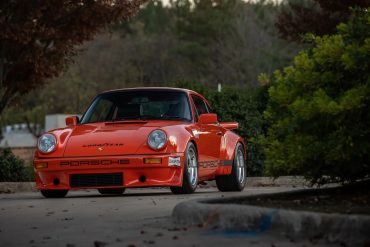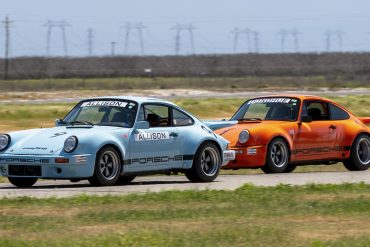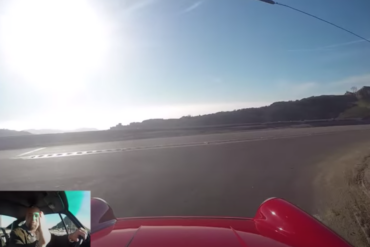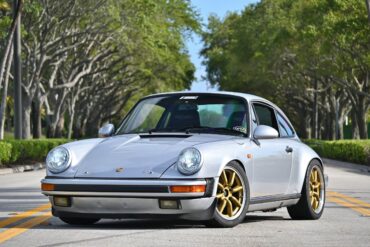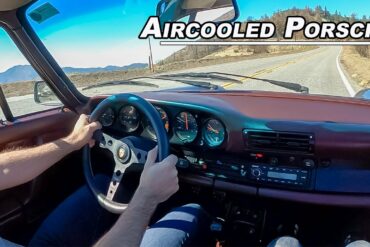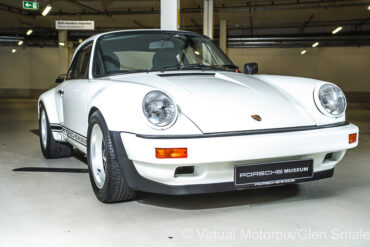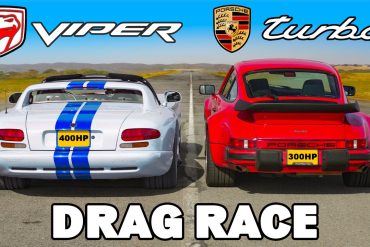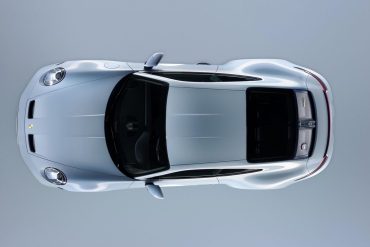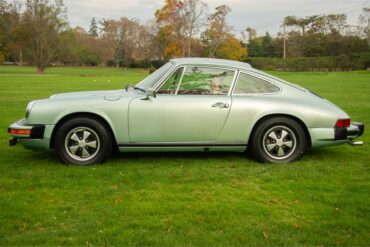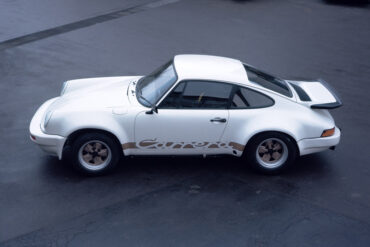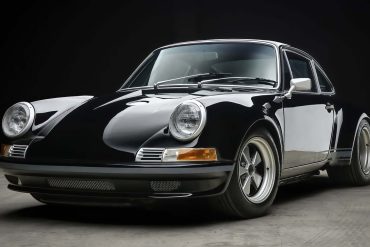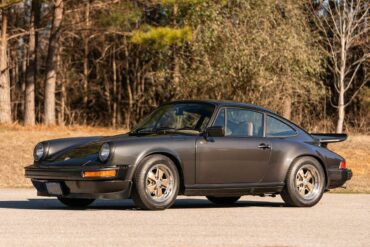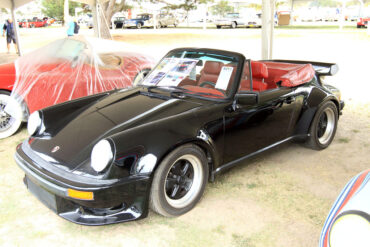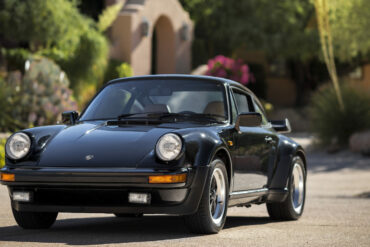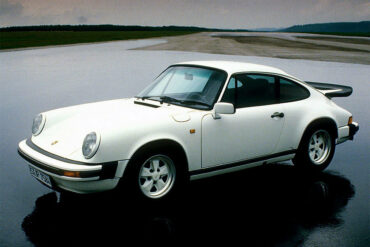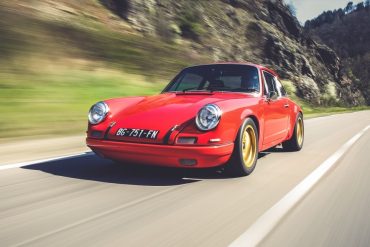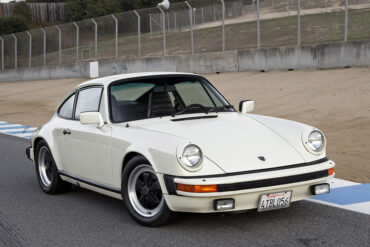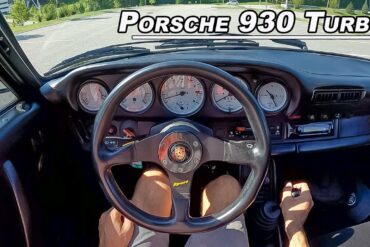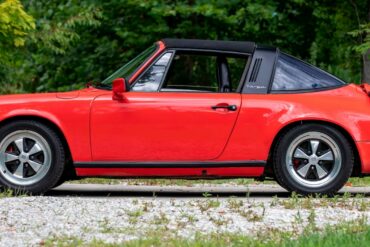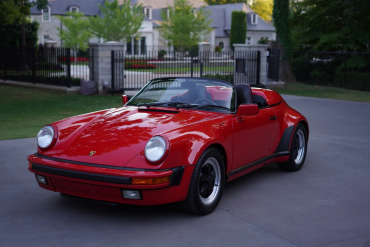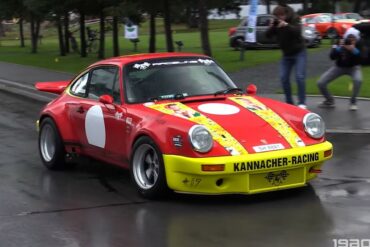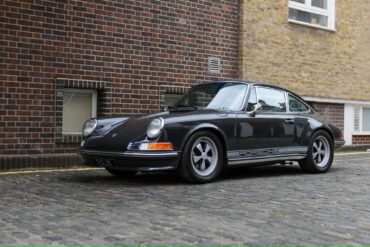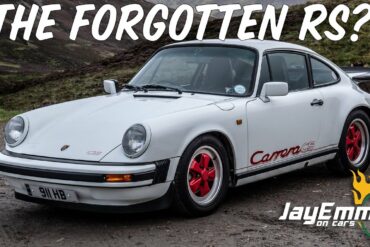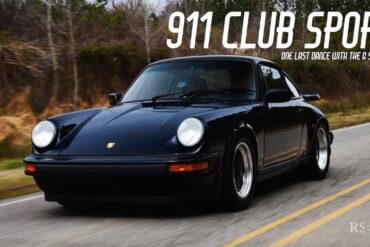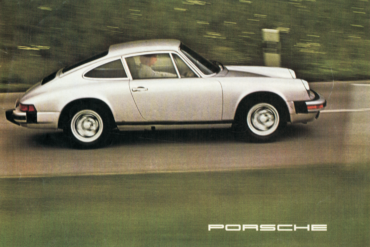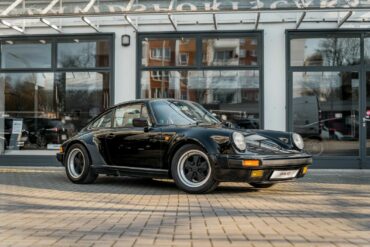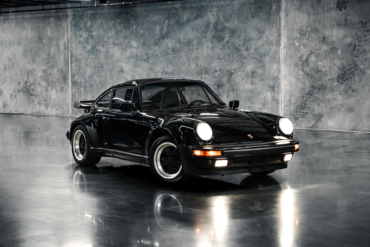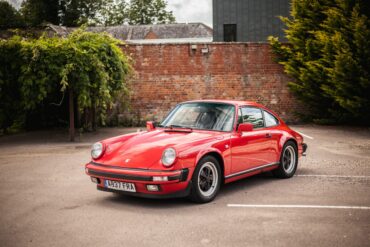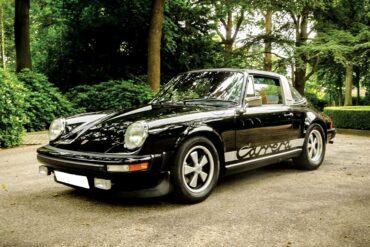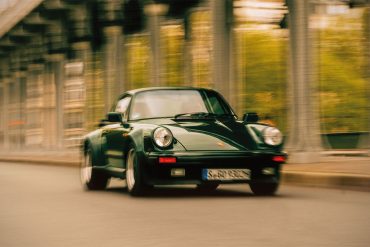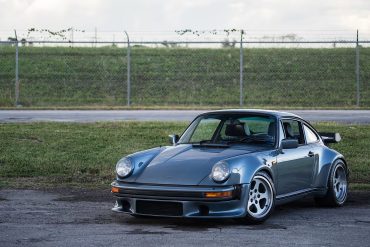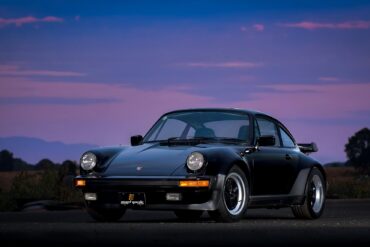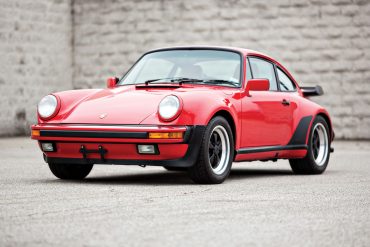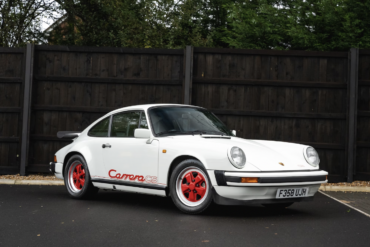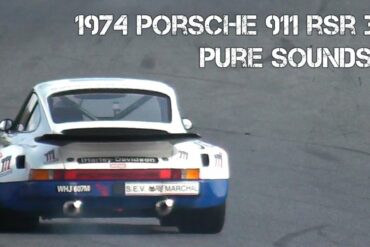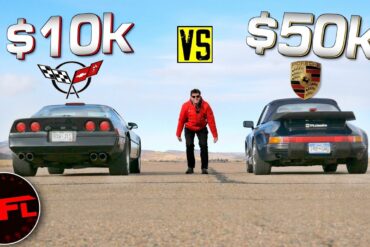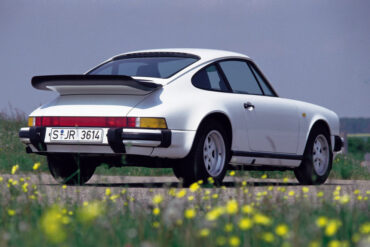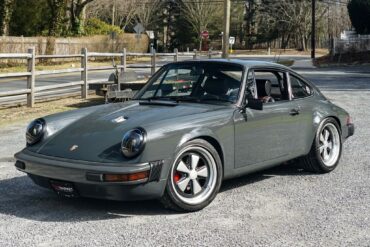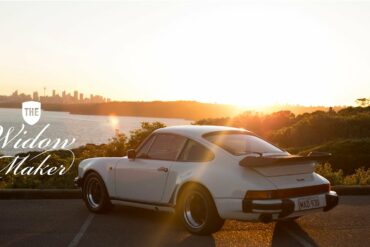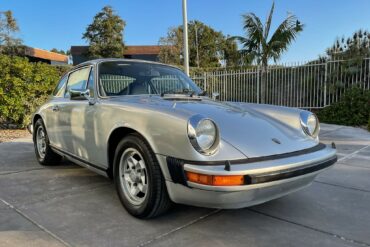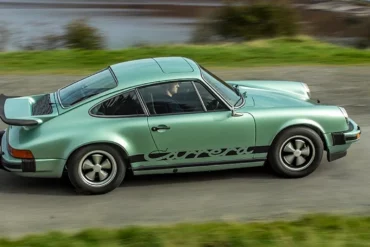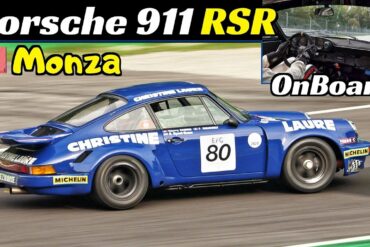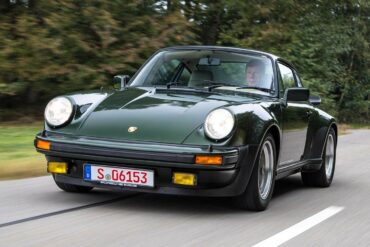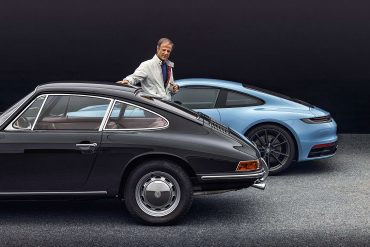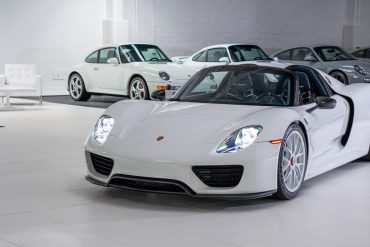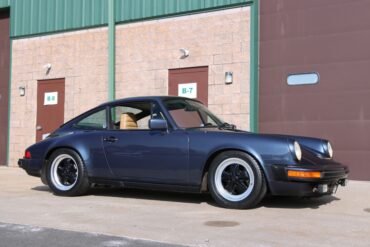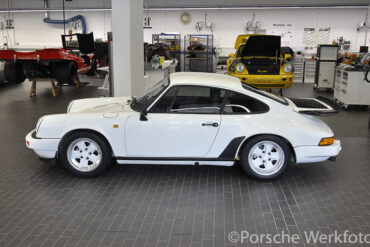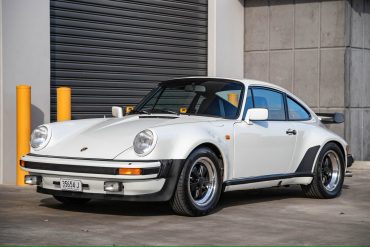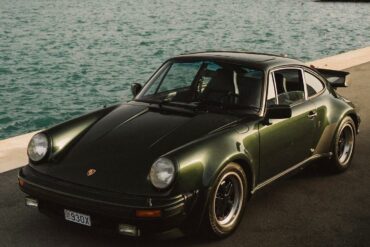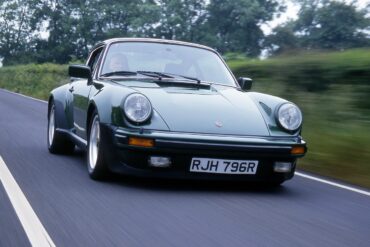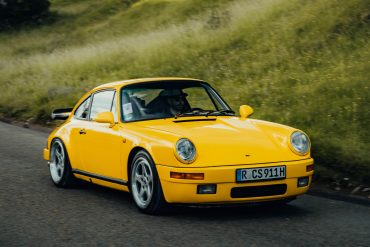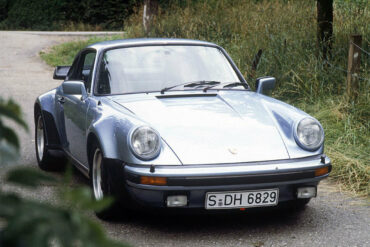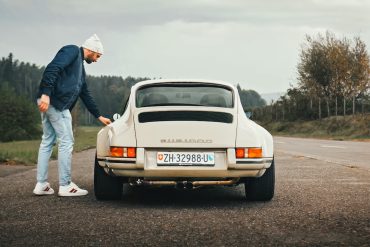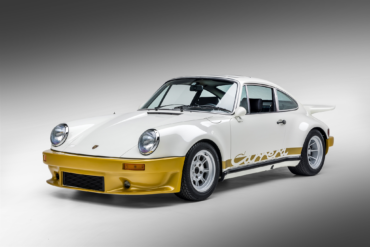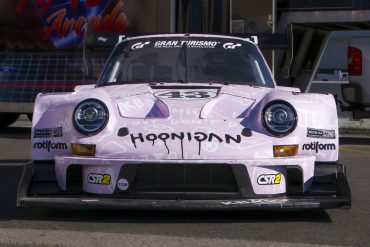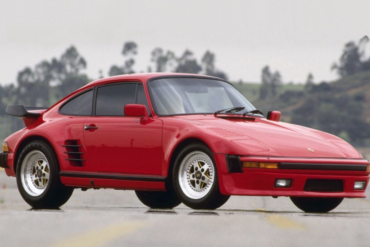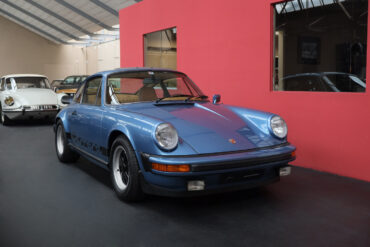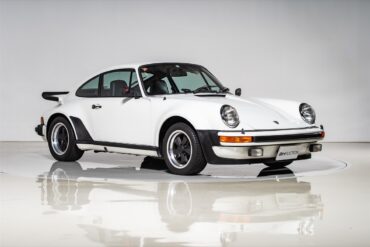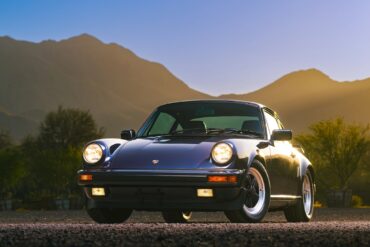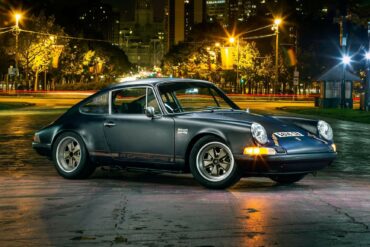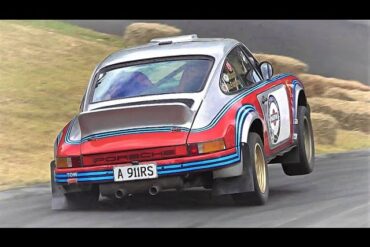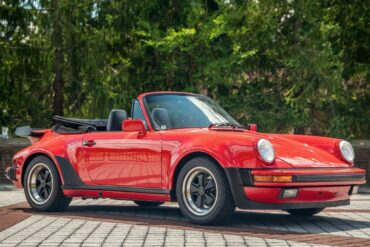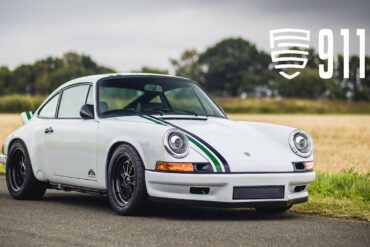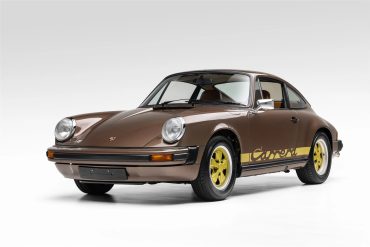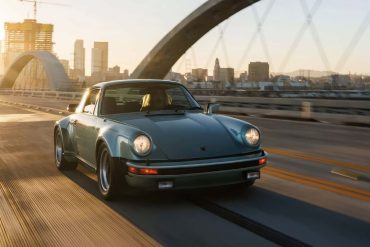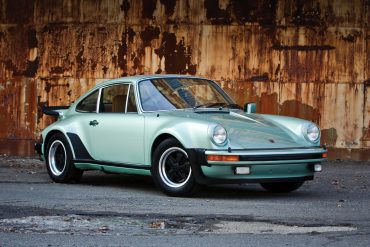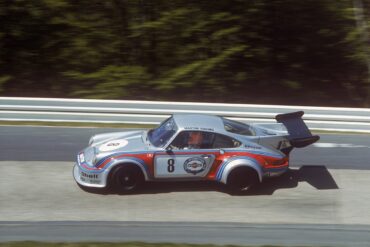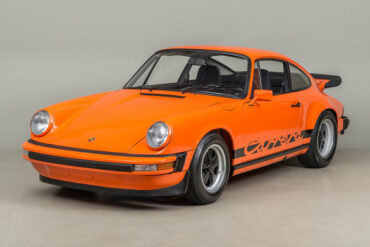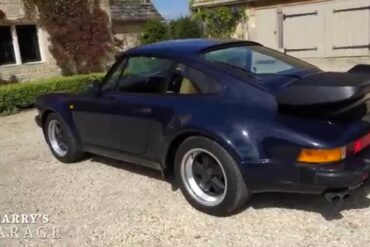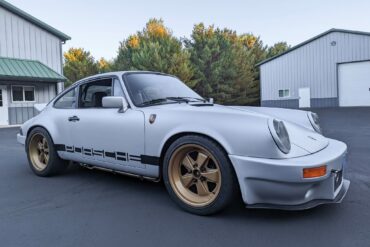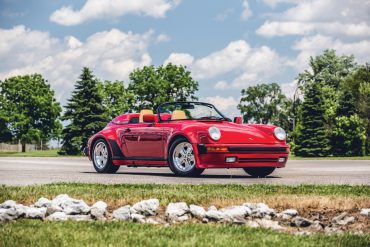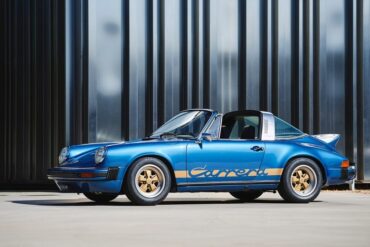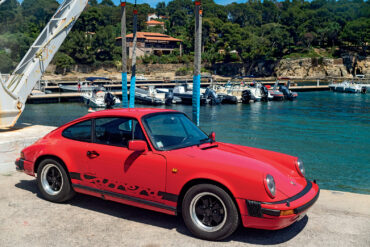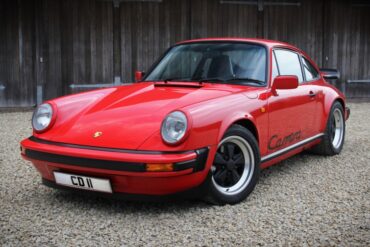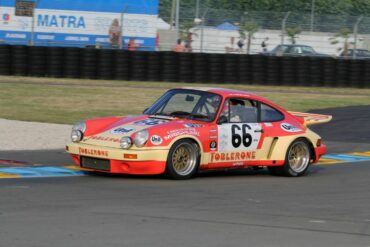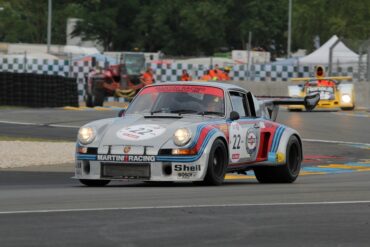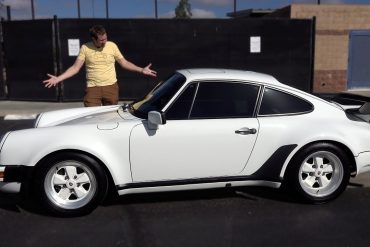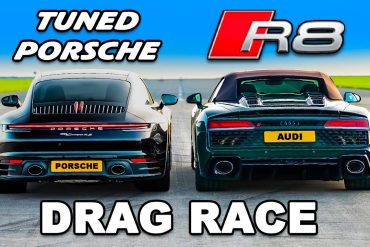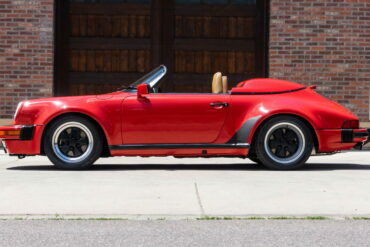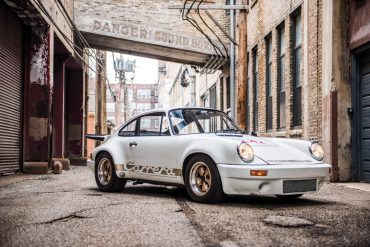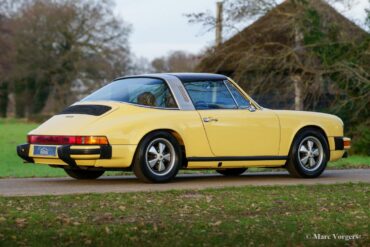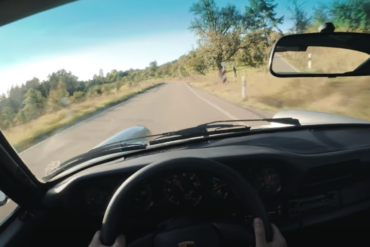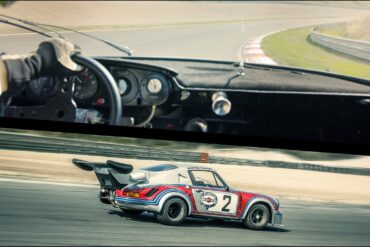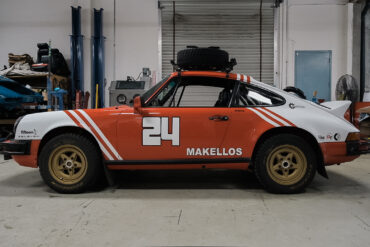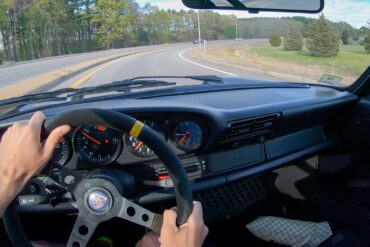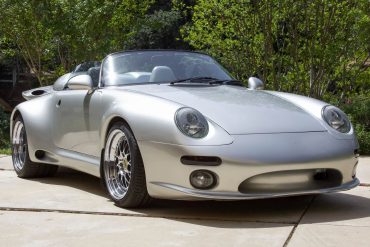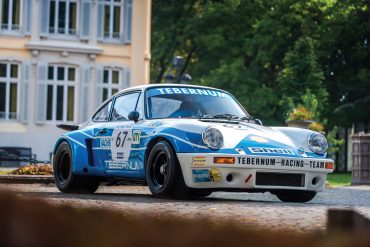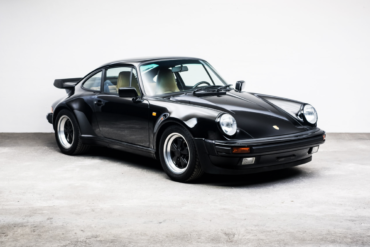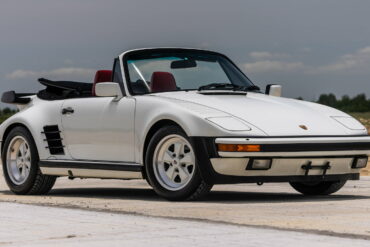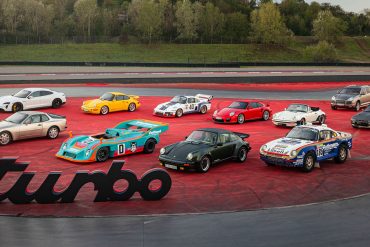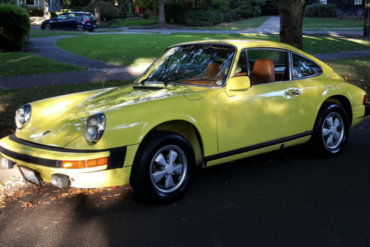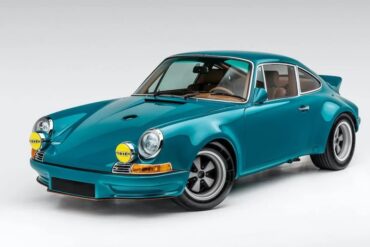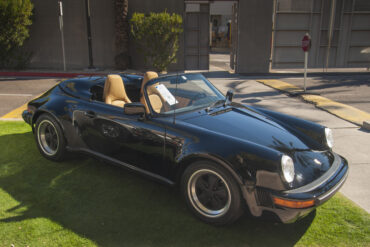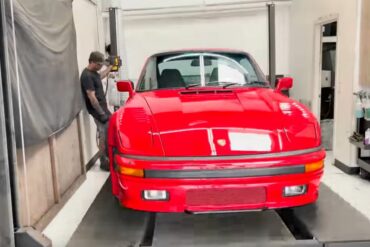This 1979 Porsche was originally a 930 Turbo coupe before it was transformed and modified into a 911 RSR Tribute...
Porsche 911 (G-Series)
The Porsche 911 G model was a true perennial and was built for a full 17 years. During this time, engines were built with 2.7, 3.0 and 3.2 liters. The narrow G-model (from 1974 to 1977) over the 911 SC, the Carrera 3.0 to the Carrera 3.2 gave it a large variety of variants, colors and equipment. The G-Body saw the introduction of impact bumpers to conform with low speed protection requirements of U.S. law, these bumpers being so successfully integrated into the design that they remained unchanged for 15 years. In 1974 the engine size was increased to 2,687 cc, giving an increase in torque. The use of K-Jetronic CIS Bosch fuel injection in two of the three models in the line up – the 911 and 911S models, retaining the narrow rear wings of the old 2.4, now had a detuned version of the RS engine producing 150 and 175 bhp (110 and 129 kW) respectively. See all of our G-Body (2nd Gen 911) Research.
All
- 911 (G-Series)
- 911 Carrera 3.0 (G-Series)
- 911 S (G-Series)
- 911 SC (G-Series)
- 911 Carrera 3.2 (G-Series)
- 911 Turbo (930)
- 911 SC Safari
- 911 Carrera RSR Turbo 2.1
- 911 Carrera RSR 3.0
- 911 SC San Remo
- 911 Carrera 3.2 Clubsport
- Porsche 953
- 911 Carrera RS 3.0
- 911 SC RS
- 911 Carrera 25th Anniversary
- 911 Turbo LE
- 911 3.2 Speedster
- 911 Carrera Commemorative
- 911 Carrera 2.7 (G-Series)
- 911 Turbo 2.7
The 15th Targa California rally recently concluded with most drivers logging 1,000+ miles over the roads “less traveled” of California’s...
Porsche 930 Turbo – One Take Matt tests a modified Porsche 930 Turbo making 150 hp more than stock! The...
This lightweight hotrod, based on a Euro 911, is built for high-performance driving. With tasteful modifications, including a carbon fiber...
POV In A Great Sounding 911 GVBC is a car enthusiasts dream! Every Friday morning a group of dedicated drivers...
Built so that the factory Rothmans Porsche Rally Team could hit the international stage, the SC RS used the Turbo’s body with fibreglass bumpers and aluminium doors. In Autumn 1983, Porsche presents the 911 SC/RS for motor racing. The engine originates from the 911 SC, with improved performance achieved by the mechanical ball fuel injection, increased compression, the cylinder heads from the 935 and forged pistons. Racing seats are fitted in place of the standard seats.
In a head-to-head competition presented by carwow, two classic cars, the 1986 Porsche 930 Turbo and the 1992 Dodge Viper,...
In the beginning… The engine of the Porsche 911 has come a long way over the past 60 years, now...
1976 Porsche 912 E Pictures & Gallery...
Following the famous 1973 F-model 911 Carrera RS 2.7, Porsche built its successor based on the G-model and it was called the 911 Carrera RS 3.0. With its 172 kW engine, it was the most powerful series production street-legal Porsche made so far. With its new 3.0-liter engine, featuring mechanical fuel injection, it was capable of 230 hp. While 1,580 Carrera RS 2.7s were built for 1973, only 56 Carrera RS 3.0s were built for 1974.
Is going backward the way forward? The Porsche 911; I can’t think of another sports car that better represents an...
In 1980, a true limited edition model 911SC was produced for the American market. The 'Weissach' edition was a standard SC with special paint. It was built in 1980 to honor the Porsche Motorsport team working in Weissach Germany. 468 units were made and half were painted Metallic Black, the other half in Platinum Metallic. The interiors were wrapped in Doric Grey leather with burgundy piping. Additional body and mechanical specs included whale tail spoiler, Bilstein dampers and Fuchs wheels.
1987 – 1989 Porsche 911 Turbo 3.3 Cabriolet (930) Pictures & Gallery...
Porsche Option Codes – Porsche 911 (1981 Model Year) Looking to decode your 1981 Porsche 911 option codes? Want to...
1987 – 1989 Porsche 911 Carrera 3.2 Clubsport (911) Technical Specifications Model 3.2 Clubsport Year 1987 – 1989 Price When...
The MR12 Force Rouge, created by Machine Revival, embodies the spirit of the cafe racer design and is built for...
Porsche Option Codes – Porsche 911 (1978 Model Year) Looking to decode your 1978 Porsche 911 option codes? Want to...
Modified Slant Nose Turbo (930) On Road The 930 Turbo being reviewed in the great POV video. Nice footage and a good...
Porsche Option Codes – Porsche 911 (1979 Model Year) Looking to decode your 1979 Porsche 911 option codes? Want to...
With its eye-catching double-humped fiberglass tonneau cover and lowered windshield, the Porsche 911 Speedster produced only in the one-1989 is...
A compilation video of the 2022 Bernina Gran Turismo hillclimb race winner, the beautiful Porsche 911 Carrera 3.0 RSR ‘IROC’...
Retro Works has restored a 1984 Porsche 911 by merging the design of a 1973 classic with a newer Carrera...
Is this the best driving classic 911? This is a great reviews of the 911 ClubSport. The 1987 Porsche 911...
Charles and Tim – One last dance with the G series. This is a great review of the 911 ClubSport....
Porsche 911 Sales Brochures (2nd Generation – G Series) Clearly going back this far, sales catalogs for Porsche cars are...
Porsche introduced a new wide-body package option. Known as the M491 option it was commonly known as the "Turbo-Look". It gave the naturally aspirated cars the look and style of the 930 Turbo with wide wheel arches and the distinctive "tea tray" tail. It wasn't just about looks however, because M491 also got you the stiffer suspension shared with the Turbo and the superior Turbo braking system as well as the wider Turbo wheels. It was available on the Coupe, Cab and Targa.
Bid to get the chance to acquire a 1987 Porsche 911 Turbo Coupe at auction with Bring a Trailer! With...
1984-1989 Porsche 911 Carrera 3.2 Coupe Pictures & Gallery ...
1974 – 1975 Porsche 911 Carrera 2.7 Targa Pictures & Gallery...
The 1974 world premiere of the 911 Turbo at the Paris Motor Show caused a sensation. Half a century later,...
The Best Driver’s Car Nobody Bought? Today I am driving a 911 Club Sport. A special version of the 3.2...
Going Global Luftgekühlt – the hit Californian-born gathering of air-cooled Porsches – lay down new roots in Europe in mid-June,...
In the mid-1980s, RUF-manufactured Porsches stood out as some of the swiftest cars globally. In top-speed assessments by “Road &...
The turbocharged 930 was produced from early 1975 was Porsche’s flagship 911 and arguably the most capable supercar of its...
1978 – 1989 Porsche 911 Turbo 3.3 Coupe (930) Pictures & Gallery ...
The 1988 Porsche 911 Carrera underwent a backdating process and received an RWB widebody kit by Porsche tuner Akira Nakai....
1988 Porsche 911 Carrera 3.2 Clubsport Auction to Watch What a way to start the new year, finding a great...
Carrera RSR 3.0 Sounds Spectacular Porsche 911 Carrera RSR 3.0 in action! Natural Sound. 1974 Porsche 911 RSR 3.0 a...
The Porsche 911 Carrera 3.2 was produced for model years 1984 to 1989. If you are looking to get into...
The 911 Carrera Club Sport was Porsche refocusing on what they do best – high performance, lightweight motoring. This is probably the most underrated Porsche ever made. Manufactured between August 1987 and September 1989 only 340 cars. It had a blueprinted, high revving engine mated to a modified short-shift, close-ratio G50 gearbox. It had track-bias suspension modifications too.
Dubbed “Mercy,” this 1978 Porsche 911SC Coupe has undergone a meticulous restoration and customization process, reaching an extraordinary level of...
A Legendary Car “We’ve had Porsches in our family for decades…my father’s had a billion of them, I think,” says...
Commemorating 25 years of Porsche sports car production, the 911S Silver Anniversary Edition is distinguished by unique Diamond Silver Metallic paint and a special black leatherette and tweed interior. The first of Porsche’s commemorative ‘celebration’ cars, this Silver Anniversary was produced in a limited run of 1,063 examples, of which approximately 500 are reported to have made their way to the United States.
In 1974 Porsche offered a high performance fuel injected Carrera specifically for the European market. These were close to 2.7 RS specification and are often referred to as the 2.7 or Euro Carrera. In many regards, this car is similar to the 1973 2.7 RS in touring trim, with its 210bhp 911/83 engine, but the 2.7 Carrera is based on the updated G-series body and interior. Later Carreras that reach American shores used had reduced power and throttle response compared to Euro counterparts.
Porsche 911 Carrera RSR (1974) by Historika – Monza Historic 2020 + OnBoard, 3-Litre Flat-Six Sound! This great and original...
Porsche Option Codes – Porsche 911 (1975 Model Year) Looking to decode your 1975 Porsche 911 option codes? Want to...
Evolution, not Revolution Since its debut in 1964, the Porsche 911 has epitomized engineering evolution. Conceived by Ferdinand “Butzi” Porsche,...
You already read about our preview of The White Collection auction here on Stuttcars. Fifty-five Porsches, mostly in white, with...
Porsche Option Codes – Porsche 911 (1980 Model Year) Looking to decode your 1980 Porsche 911 option codes? Want to...
Porsche 911 Carrera 3.2 Clubsport (1985) in the Museum workshop As I’ve explained on the few occasions I’ve burst into...
The 930 was the most capable supercar of its time and catapulted Porsche’s brand worldwide, keeping up with the likes...
The 930 Turbo with its 3.0 L turbocharged flat 6 was the fastest production car in the world at the...
1975 -1977 Porsche 911 Turbo 3.0 (930) Technical Specifications Type Series Production Car Production Years 1974 – 1979 Built At...
Starting as a humble service station in Pfaffenhausen, Germany, RUF evolved within three decades into a renowned creator of some...
1978 – 1989 Porsche 911 Turbo 3.3 (930) Technical Specifications Number of cylinders Boxer 6 Engine Code 930/60/66 Fuel type...
If the current 911 restomods are not to your liking, you might be interested with the SUB1000 from Sportec. It’s...
Bring A Trailer is currently offering a 1977 Porsche 911S coupe that has been modified in RSR style from its...
If you think post-war sports cars or muscle cars from the late 1960s are the staple of the collector car...
1987 -1989 Porsche 911 Turbo 3.3 SE ‘Flachbau’ Technical Specifications Type Series Production Car Built At Stuttgart, Germany Production 800...
1974 – 1975 Porsche 911 Carrera Technical Specifications Production Years 1974 – 1975 Built At Stuttgart, Germany Price $ $13,575...
Porsche Option Codes – Porsche 911 (1976 Model Year) Looking to decode your 1976 Porsche 911 option codes? Want to...
For decades, Porsche has been renowned for its focus on performance in the automotive industry. One of its top models,...
ROCS Motorsports reimagined a 1984 Porsche 911 Carrera Coupe with a custom backdate restoration between 2020 and 2021. The “Philadelphia...
Now That’s What I Call Driving This is Stuart McFarlane´s beautiful Porsche 911 SC Safari, a 1974 machine built to...
The turbocharged 930 was produced from early 1975 was Porsche’s flagship 911 and arguably the most capable supercar of its time....
The Ultimate Restomod? Paul Stephens has been restomodding classic Porsche 911s for years. The Le Mans Classic Clubsport is his...
In 1974, Porsche offered a high performance fuel injected Carrera specifically for the European market. These were close to 2.7...
In the distinguished circles of Porsche enthusiasts, Magnus Walker’s 1977 Porsche 930 Turbo Carrera holds an esteemed position. This automotive...
(1975 – 1977) Porsche 911 Turbo 3.0 Pictures & Gallery...
For 1974 both the 911 Carrera RSR 3.0 and RSR Turbo 2.1 were created - the 3.0L for the customer teams and the 2.1 turbo for Porsche’s own team. The 911 Carrera RSR Turbo 2.1 developed 338-368 kW in power, but as the engine was small, the turbo lag was big and it wasn’t as easy to drive out of the corners as it was with the 3-litre normally aspirated car. Weight reduction measures included plastic hoods, fender flares and doors and an aluminium safety cage.
1974 – 1976 Porsche 911 Carrera MFI Technical Specifications Production Years 1974 – 1976 Built At Stutgart, Germany Production 1647...
A Legend Reviews A Legendary Car...
This 1979 Porsche 911SC has received some modifications, such as adding IROC/RS body styling, an upgraded suspension, custom interior, gold...
In 1989, Porsche marked the 25th anniversary of 911 production by introducing noteworthy offerings. Alongside a commemorative edition of their...
1974 – 1976 Porsche 911 Carrera 2.7 (MFI) Targa Pictures & Gallery...
1976 – 1977 Porsche 911 Carrera 3.0 Technical Specifications Type 2+2 FHC Number of doors 2 Engine 3.0 L Aircooled...
Each year, Porsche enthusiasts from across Norway gather in the picturesque village of Lærdal to celebrate air-cooled Porsche history. Surrounded...
1987 – 1989 Porsche 911 Carrera 3.2 CS Pictures & Gallery...
1974 – 1975 Porsche 911 Carrera RSR 3.0 Pictures & Gallery ...
1974 Porsche 911 Carrera Turbo 2.1 Pictures & Gallery...
Introduced in 1963, the Porsche 911 was initially designed as a lightweight, low-power finesse car. However, in 1975, Porsche launched...
Who will win when you drag race a a tuned Porsche 911 Carrera 4S against an Audi R8 V10 Performance...
This Porsche began life as a 1981 911 SC sunroof coupe before it was modified with a custom backdated bodywork...
Essentially a Carrera 3.2 with a chopped, more steeply raked windscreen and hood, plus a stripped-out interior. Most had wide Turbo bodies. Porsche insisted that the simple hood was not designed to be 100 per cent watertight. The first Porsche 911 Speedster was built in 1989 and it was the last vehicle with the old 911 body. Three decades passed before the Speedster made a comeback. Had a 3.2 L Aircooled Flat 6 and 2274 were produced for the 1989 model year.
The 1974 Porsche 911 Carrera RS 3.0 stands as the ultimate evolution of the naturally aspirated Porsche 911 designed for...
1974 – 1977 Porsche 911 S 2.7 Targa Pictures & Gallery...
Best On Track POV Video I’ve Ever Seen This Porsche 911 Carrera RSR being hammered on-track is the stuff of...
Wipe the Drool From Your Chin It’s not every day that a European spec 1978 Porsche 911 SC comes your...
911 3.2 Carrera POV Run Onramps and Highway driving in my Aircooled 1988 Porsche 911 3.2 Carrera. Be sure to...
This 1989 Porsche 911 Speedster pays homage to the original 356 Speedster, featuring a distinctive short, sharply angled windscreen and...
The Carrera RSR 3.0 is one of those rare and super-special Porsches, and one of the most successful Group 4...
Porsche Option Codes – Porsche 911 (1989 Model Year) Looking to decode your 1989 Porsche 911 option codes? Want to...
Live now on Mecum Auctions is perhaps one of the most popular Porsches of the 1980s, a beautiful 1987 Porsche...
In model year 1978, the 911 model range was reduced to two models. The 911 SC (Super Carrera) took the...
A visit to Porsche at the Retro Classics in Stuttgart is always a journey through time. This year, the sports...
1976 Porsche 912 E Technical Specifications Engine type – Number of cylinders Boxer 4 Engine Code – Fuel type Petrol...
This 1975 Porsche 911S was customized by Patrick Motorsports of Phoenix, Arizona with a range of modifications, including widened steel...
1989 Porsche 911 3.2 Speedster (911) Technical Specifications Price $ USD $65,480 Engine Air-cooled Flat-6 Valvetrain SOHC Displacement 3164 cc...
The Porsche 930 Turbo might not be as valuable or coveted as the early Porsche 911, but recently a special...


